Drinking More Chianti Classico Is Highly Recommended
In the entirety of the wine world, no region has been overlooked more than Chianti Classico. Here in America we were flooded with low quality wines from the stunning region, shipped to us in a bottle they call a "fiasco" - adorning a straw covering that back in the 14th and 15th Century acted as additional wrapping and protection when in transit, but became the butt of a joke for many years. Luckily for Chianti Classico, it's one of the most stunning places on earth, and they grow a grape that wine drinkers the world over have heard of and love to say: Sangiovese.
In case you're unable to attend the Festa del Chianti Classico this weekend at Tavernetta in Denver, here are 7 Chianti Classico wines I recommend you get your hands on, dig into, and re-familiarize yourself with the Tuscan brilliance of the famed wine region.
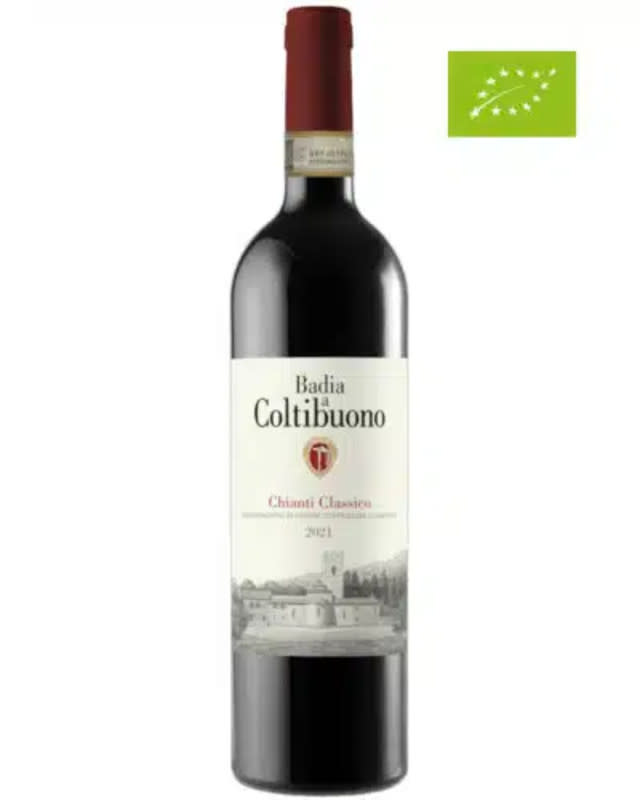
Courtesy of Badia a Coltibuono
For six generations Badia a Coltibuono has belonged to the Stucchi Prinetti family, caring custodians for the special property since 1846 when it was purchased by their ancestor, a Florentine banker named Michele Giuntini. In the 1950s the heir Piero Stucchi Prinetti started bottling the best vintages of the estate’s Chianti Classico Riserva and found commercial success both on the domestic and international markets. At this time he also realized their olive groves produced tremendously valued extra virgin olive oil, opening the floodgates for a new export that Tuscany had been known so well for locally.
In the heart of the Sienese part of Chianti Classico, from vineyards in Monti (Gaiole) and Vitignano (Castelnuovo Berardenga), this wine is comprised of the Sangiovese from the estate's massale-selection with small quantities of complementary grapes. The vinification takes place with spontaneous yeasts in the modern cellar of Monti, using delicate techniques to maximize the expression of the complexity and balance of these grapes.
Suggested Retail Price: $19.99
Zone of production: Gaiole in Chianti – Castelnuovo Berardenga
Location: Chianti Classico
Altitude and orientation: 260-370m. s.l.m. Sud, SE, SW
Soil: Clay, and limestone rock
Training system: Guyot
Plant density per hectare: 5500-6600
Grape varieties: Sangiovese and traditional grapes
Vinification: Fermentation with indigenous yeasts. Cap managed with punchdown. Maceration on the skins for 3 weeks
Ageing: 12 months in french and Austrian oak casks of varying sizes
No. of bottles produced: 147,000
Alcoholic By Volume: 13.5%
Recommended serving temperature: 16–18°C | 60–65°F
Pairings: First courses such as pasta. Meat dishes and moderately aged cheeses.

Courtesy of Mazzei
With this outstanding Chianti Classico Riserva, the Marquis Mazzei celebrate their notable ancestor Ser Lapo, author of the first official document mentioning “Chianti wine” from December 16th, 1398
"Payable, on 16 December (1398), 3 florins 26 pennies 8 dinars to Piero di Tino Riccio, for 6 barrels of wine from Chianti ...said produce paid by credit letter of Ser Lapo Mazzei." In their exchanges these two wonderful characters were discussing the deals of the time, the pleasures of life, and obviously the wine, of which Ser Lapo was a great fan and connoisseur.
Suggested Retail Price: $35
Winery Location: Chianti Classico, Toscana
Grape Varieties: 90% Sangiovese, 10% Merlot
Alcohol By Volume: 13.5%
Total Acidity: 5.34%
Vineyard Location: Cornia: 250 - 330 m (820 - 1,080 ft) a.s.l. | Caggiolo: 290 - 350 m (950 - 1,150 ft) a.s.l.
Soil: Cornia: Clay and limestone | Caggiolo: Calcareous Alberese with clay texture
Vineyard Age: 15-30 years
Ageing: 12 months in small french oak barrels (225/500 lt - 50% new)
Production: 260,000 bottles
First Vintage: 1983
Ageing Potential: Over 15 years
Wine Description: Fresh, tannic, with aroma of berries, strong structure, earthy and intense taste
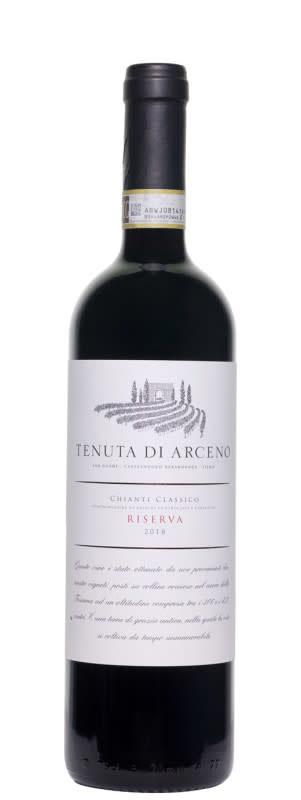
Courtesy of Tenuta di Arceno
Located in the in the southernmost commune of Castelnuovo Berardenga, Tenuta di Arceno is run under the guidance of vigneron Pierre Seillan.
Through its history, the estate passed through the ownership of two historically prominent Italian families – the Del Taja family, followed by the Piccolomini family. The Del Taja family purchased the land parcel by parcel in 1504, expanding the estate and adding architectural enhancements. In 1829, the Del Taja family sold the property to one of the most illustrious families of Siena, the Piccolominis, who added to the grandeur of the estate – they built gardens, lakes, and many of the villas that stand on the property today. Continuing its legacy of family ownership, Tenuta di Arceno was acquired by Jess Jackson and Barbara Banke in 1994. It was one of the first estates the Jackson Family purchased outside of California.
The Chianti Classico Riserva comes from some of the warmer, south-facing blocks at the estate. It is composed almost entirely of Sangiovese and spends one year in small French oak barrels. This is the epitome of modern Chianti with its dark color, pure fruit, balance, power and velvety tannins. The dominant flavors include violets, plums, cherries, orange peel, earth, licorice, cedar and smoke.
HARVEST NOTES: The 2018 vintage was beautiful and will be well-remembered. Overall, the growing season was consistent and produced
very balanced wines. With a cool, rainy February and March, bud break arrived later in the season and gave way to perfect conditions in June and July. We held our breath through early August as hailstorms approached the estate – sometimes less that 1km away – until welcome rain arrived later in the month to rehydrate and cool the vines. With warm days and cool nights through the rest of August, we had optimal conditions for harvest.
TASTING NOTES: The 2018 Chianti Classico Riserva possesses rich fruit aromas of ripe plum, floral notes of honeysuckle and earthy hints of forest floor. An incredibly silky palate carries through the beautiful balance of fruit and earth flavors - like eating wild blueberries off the vine - with dominate notes of bright red cherries and dark chocolate. The finish is long and intriguing, showcasing classic notes of orange peel with undertones of cedar and tobacco. The vibrant acidity suggests the wine will age gracefully for years to come and that 2018 will be remembered as a great year.
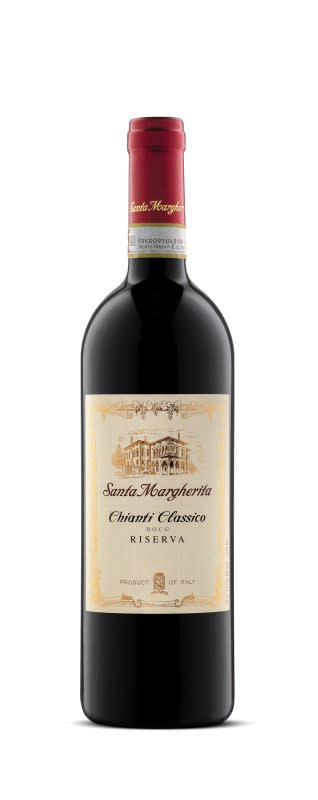
Courtesy of Santa Margherita
Santa Margherita's history began in 1935 on abandoned land in the countryside of Italy's Veneto region. A famed brand known for Pinot Grigio and Prosecco production, their movements in Tuscany often get overlooked. The new “heart" of the Santa Margherita Wine Group in Tuscany is their complex at "Lamole di Lamole" in Chianti Classico, a farm consisting of 177 hectares, of which 57 hectares are dedicated to the cultivation of vineyards and 4 hectares to olive groves, and at “Sassoregale” in Maremma, where out of 39 hectares of land, 30 hectares are dedicated to grape vines.
Since 2011 to date, all of 13 million Euro have been invested in developing Santa Margherita's Tuscany complex.
Suggested Retail Price: $25.99
Tasting Notes: The aromas of this complex red wine range from cherries and plums to gladiolus flowers and earthy flint. The tannic, oak-aged flavors are bright and round, with a dry, warm, earthy finish.
Food Pairings: Best enjoyed with very flavorful dishes, such as tomato-based sauces, mushroom ravioli, beef or pork roasts, and game meats from venison to pheasant. It is also excellent with mature cheeses.
Grape Varieties: 85% Sangiovese, 15% Merlot & Cabernet Sauvignon
Origin: Chianti Classico
Alcohol By Volume: 13.5% vol.
Serving Temperature: 61 - 65° F
Aging Potential: 6-8 years

Courtesy of Ruffino
Riserva Ducale was born in 1927, to pay homage to the Duke of Aosta who had reserved his preferences for this wine. Twenty years later Ruffino celebrated an extraordinary vintage, 1947, with the first edition of Riserva Ducale Oro. Riserva Ducale Oro thus anticipates the concept of Gran Selezione.
100% sourced from Ruffino's acclaimed Gretole and Santedame Estates in the renowned Castellina subregion of Chianti Classico. The wine was aged for about one year in traditional large and neutral oak casks (Slovenian oak of 925-2,985 gallons). After a year, the wine was transferred into small second-use barriques for another 12 months. Neutral oak allowed the blend to fully develop an elegant and complex flavor profile. The wine then spent an additional 3-4 months in bottle to allow it to settle before release.
Suggested Retail Price: $39.99
Winemaker’s Notes: The grapes wheree vinified separately parcel by parcel. We thus obtain rigorous respect for territorial typicality and pedoclimatic variety. The alcoholic fermentation takes place at a controlled temperature in steel vats at 27° with constant punching down for about 10 days, followed by a post-fermentative maceration on the skins for another 10 days. The malolactic transformation takes place in concrete tanks.
Color: Garnet with brick reflections.
Aroma: An incensed nuance introduces the pencil, wood and graphite, the black cherries in spirit well integrated with the fruit notes and the green and vegetal ones before an inky closure.
Taste: A precise attack for a sip well integrated by important, well-polished tannins, spirited fruit, a little spiciness for a soft and intense overall. Structure and acidity that lead to a highly persistent finish.
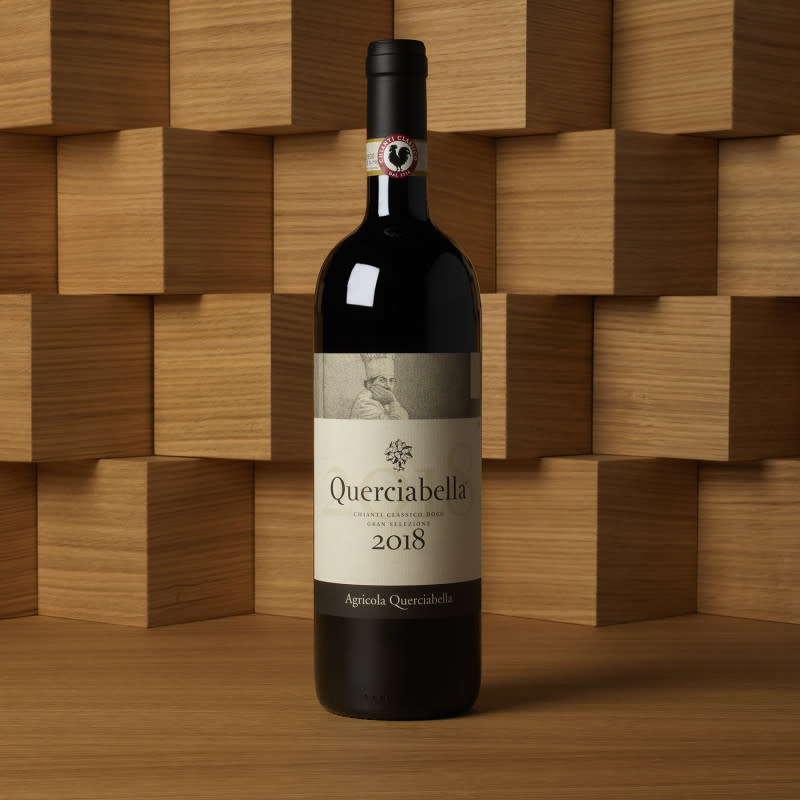
Courtesy of Querciabella
Querciabella Chianti Classico has been the centrepiece of Querciabella’s winemaking operations since the winery’s debut. Consistently ranking at the highest levels of critical acclaim it’s a real delight for wine and food enthusiasts all over the world.
A beautiful balancing act of crisp, inviting acidity, pure varietal fruit flavour and character, Querciabella Chianti Classico represents the pinnacle of high-altitude, perfectly exposed Sangiovese fruit. Its complexity and consistency derive from sourcing the grapes from top sites in three of the denomination’s best sub-zones, now also known as UGAs.
Each vineyard is cared for on a lot by lot basis to respect the essence of each site. The same focus and precision in the cellar, allow for natural winemaking with minimal intervention, that preserves the purity of the fruit. After about 14 months in fine-grained oak barrels, and regular racking, only the best lots make it to the final blend. Once bottled, the wine rests patiently for a few more months before release.
This patient maturation adds a layer of softness and enhances the varietal fruit notes typical of quality Sangiovese. Querciabella Chianti Classico is, in fact, a perfect foil for food, the crispness and the roundness make it perfectly suitable for a wide variety of flavours and cuisines.
No animal products or byproducts are used in the production of this wine, making it suitable for vegans and vegetarians.
Suggested Retail Price: $190
Appellation: Chianti Classico DOCG
First vintage: 1974
Grapes: Sangiovese
Viticulture: Plant-based biodynamics
Certifications: Vegan; Organic
Maturation: 24 months in total, 12 months in French oak
Annual production: 180,000 bottles
Alcohol Content: 14% vol.
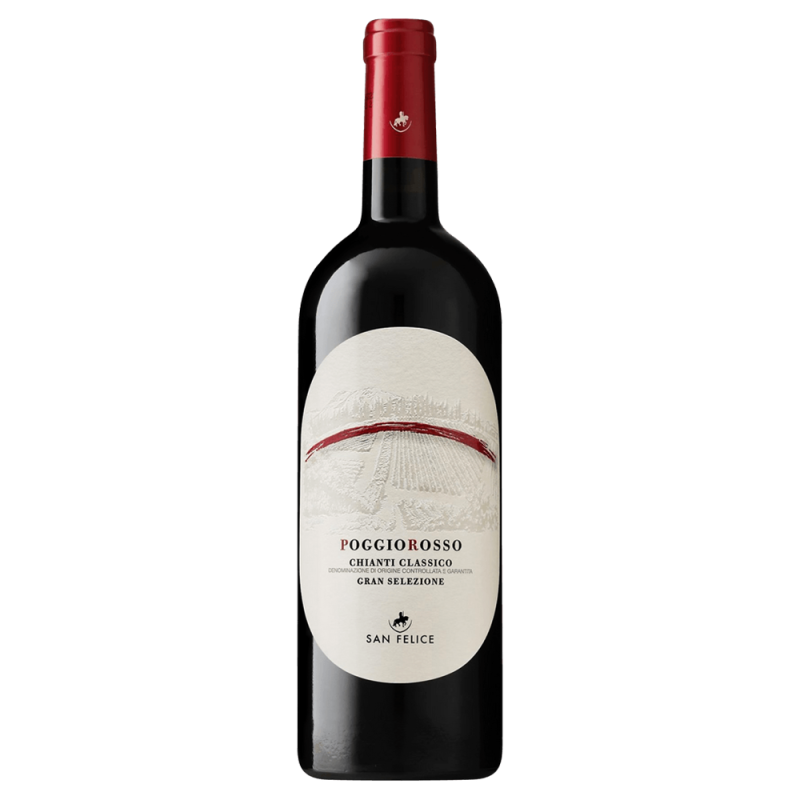
Courtesy of San Felice
Between the Chianti hills and the landscape of the Crete Senesi, among woods and vineyards that stretch as far as the eye can see, olive groves and rows of cypress trees that line the roads and pathways, in the municipality of Castelnuovo Berardenga, just a few kilometers from Siena, stands San Felice with its splendid Borgo.
The winemaker, Leonardo Bellaccini, has pioneered many unique practices. Importantly he sees distinctive characteristics in each of San Felice’s undulating slopes and he treats each vine within the vineyard individually. Having identified five macro-areas Leonardo and his team has planted the grape varieties which thrive in the specific geography and soil.
As early as the late 1970s, in the Poggio Rosso area, a series of selected clones of Sangiovese were planted. Poggio Rosso is the fruit of a rigorous selection of this grape variety from some parcels of the same single vineyard, and today it represents the pinnacle of San Felice’s terroir. A wine of immense depth and superb elegance, produced in limited quantity and exclusively in outstanding vintages.
Suggested Retail Price: $75
Bottles Produced: 6,000
Serving Temperature: 18°C
Alcohol By Volume: 14.5%
Cellaring: 20-25 years
Total Acidity: 6.5 G/L
Residual Sugar 0.5 G/L
2018 began with an early sprouting due to high temperatures in March and April, followed by a fairly rainy May. Temperatures have started to rise again since June; summer temperatures in the norm with scattered rains. The month of September in particular saw a succession of sunny days but with a great thermal excursion between day and night, which allowed the grapes a proper phenolic and aromatic maturation.

